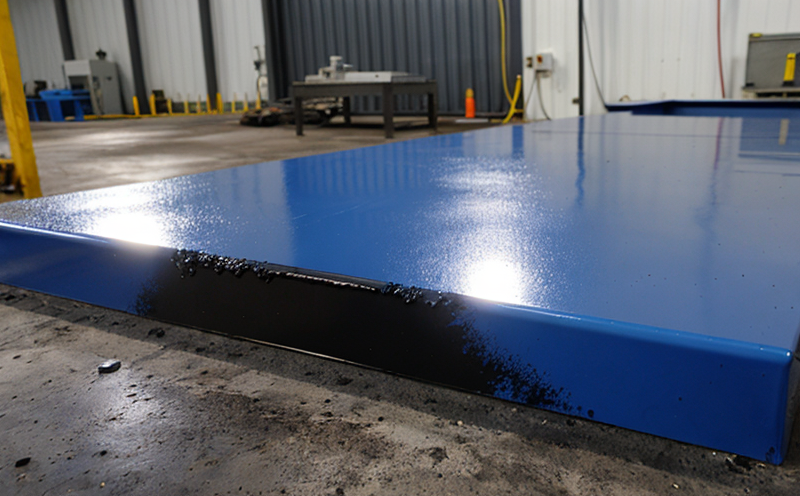ISO 15184 Hardness Testing of Coatings
The ISO 15184 standard specifies a method for determining the hardness of coatings, platings, and thin films using micro-indentation techniques. This test is particularly important in sectors such as automotive, aerospace, and manufacturing where surface properties significantly influence performance and durability.
Hardness testing helps ensure that coatings meet specific requirements set by manufacturers, regulatory bodies, and quality standards. For instance, in the automotive industry, a coating's hardness directly impacts scratch resistance, which is crucial for maintaining aesthetic appeal over time. In aerospace applications, high hardness can prevent wear and improve longevity under extreme conditions.
The test involves applying a small indenter to the surface of the specimen with controlled force and measuring the depth of indentation. The resulting Hardness Number (Hv) provides insight into how hard a coating is relative to standard materials. This information is vital for R&D teams as they optimize coatings for specific applications.
Preparation of the sample is critical in this process. Typically, specimens are polished until a smooth, flat surface is achieved. Care must be taken not to alter the surface properties during preparation. The test itself can be performed using various types of micro-indentation testers such as Knoop or Vickers indenters.
Understanding acceptance criteria for hardness testing is also essential. For example, automotive manufacturers may specify a minimum hardness value for their components' coatings to ensure they meet durability standards. Compliance with these standards ensures reliability and safety in end-use products.
Scope and Methodology
| Aspect | Description |
|---|---|
| Type of Test | Micro-indentation hardness testing using standardized indenter loads. |
| Application | Determining the hardness of thin films, coatings, and platings on metals or other substrates. |
| Equipment Used | Micro-indentation testing machines such as Knoop or Vickers indenters. |
| Sample Preparation | Polishing the sample to a flat, smooth surface without altering its properties. |
The testing process involves applying controlled loads to the sample and measuring the depth of indentation left by the indenter. The resulting Hardness Number (Hv) is calculated based on these measurements. This method ensures that any coating or plating can be accurately assessed for its hardness.
Benefits
Implementing ISO 15184 hardness testing brings several benefits to businesses operating in metallurgy and material testing sectors. Firstly, it ensures product quality by providing a standardized way to measure coating hardness across different materials and applications.
Secondly, compliance with industry standards can enhance the reputation of a company among its clients and stakeholders. This is especially true for industries like automotive and aerospace where customer trust hinges on reliability and performance.
R&D teams benefit from this test as it allows them to fine-tune coatings for specific applications without compromising quality or durability. For procurement departments, knowing the hardness of a coating ensures that only high-quality materials are used in production processes, reducing costs associated with substandard materials.
Why Choose This Test
- Precision: Micro-indentation testing provides highly accurate measurements of coating hardness.
- Standardization: Adherence to ISO standards ensures consistency across different laboratories and regions.
- Comprehensive Data: The test generates detailed reports that can inform various aspects of product design and development.
- Informed Decision-Making: By understanding the hardness properties, businesses can make informed decisions about their coating materials and processes.





